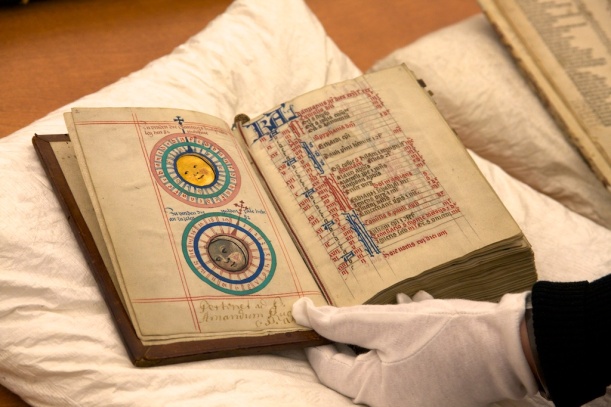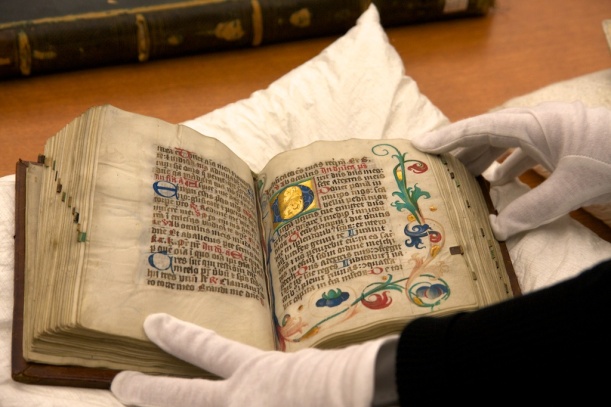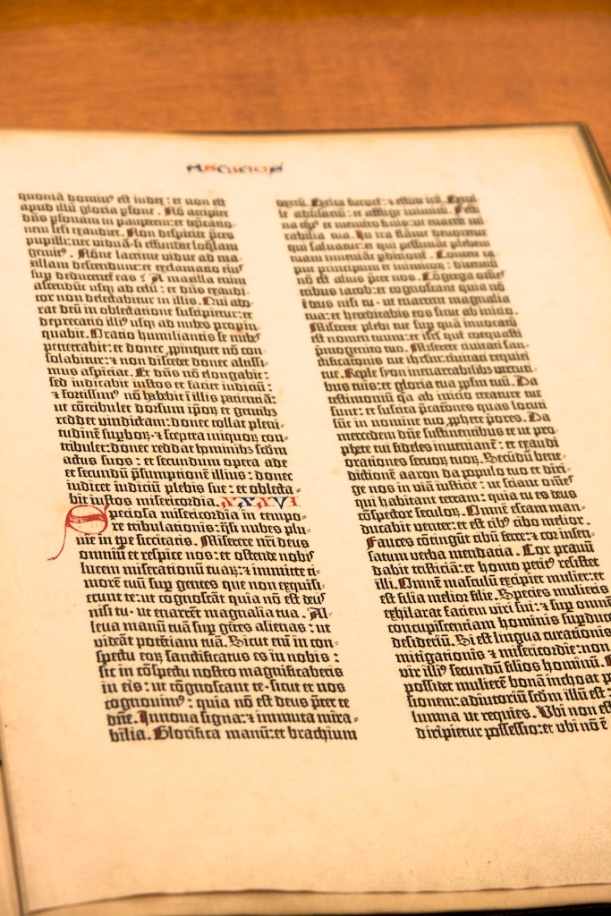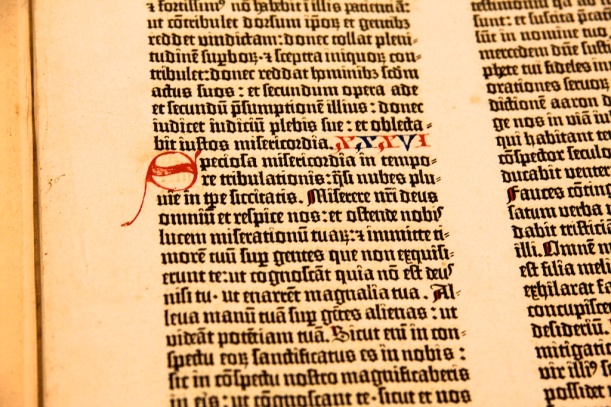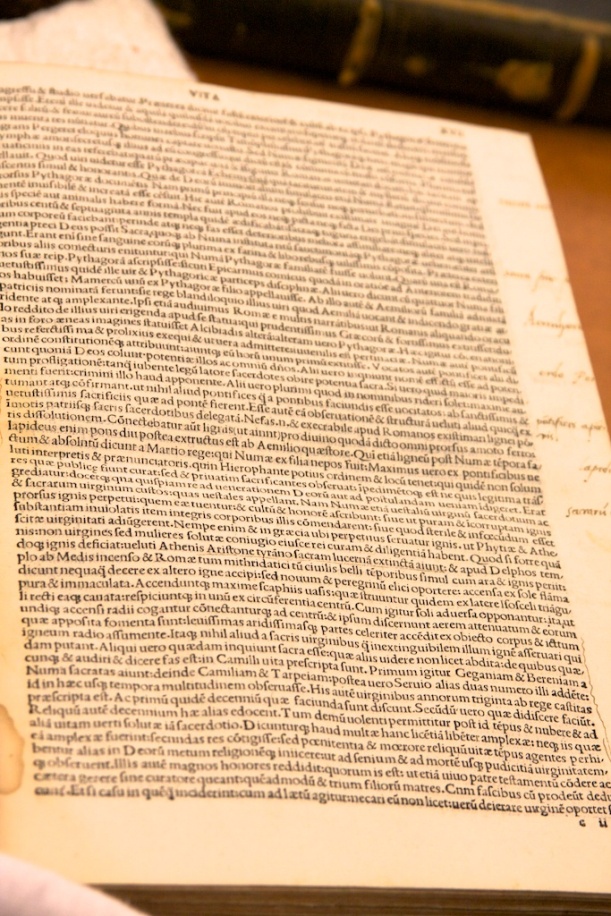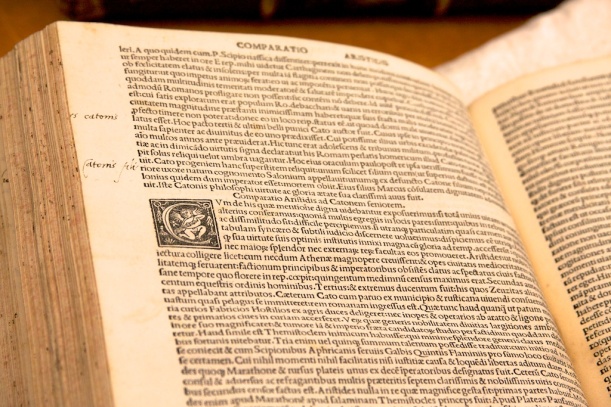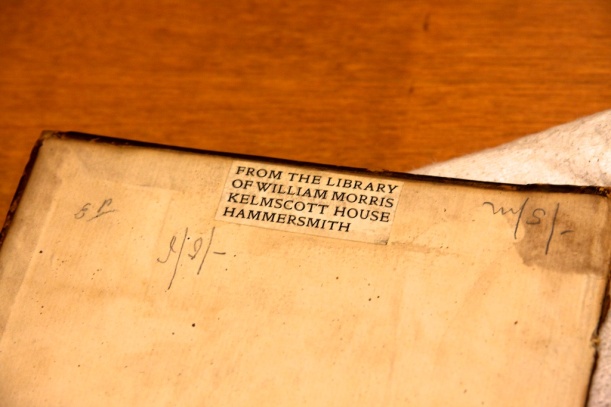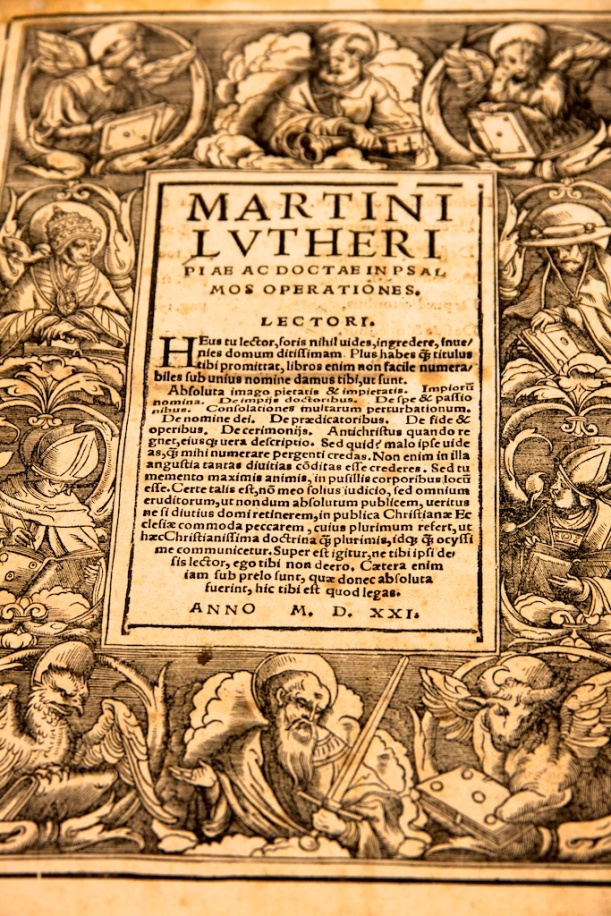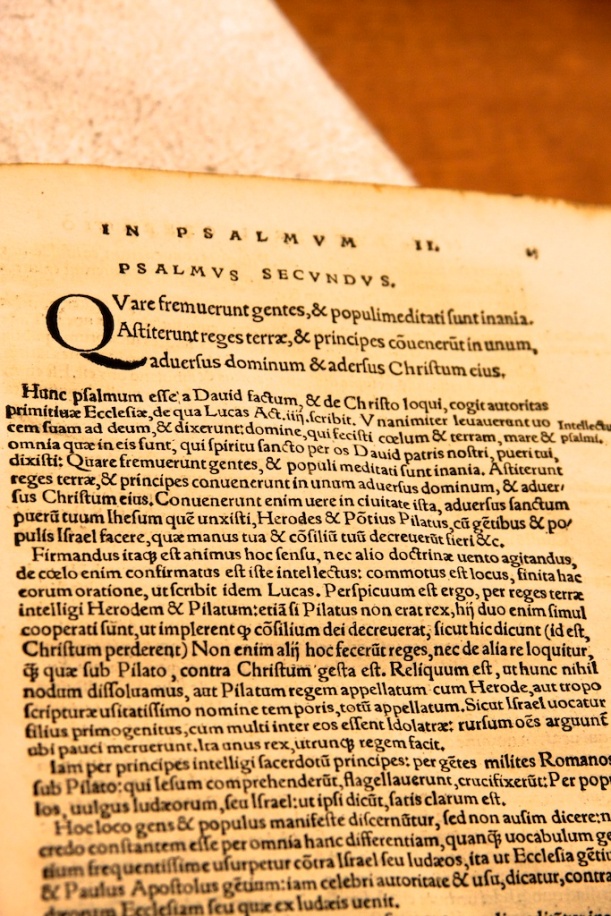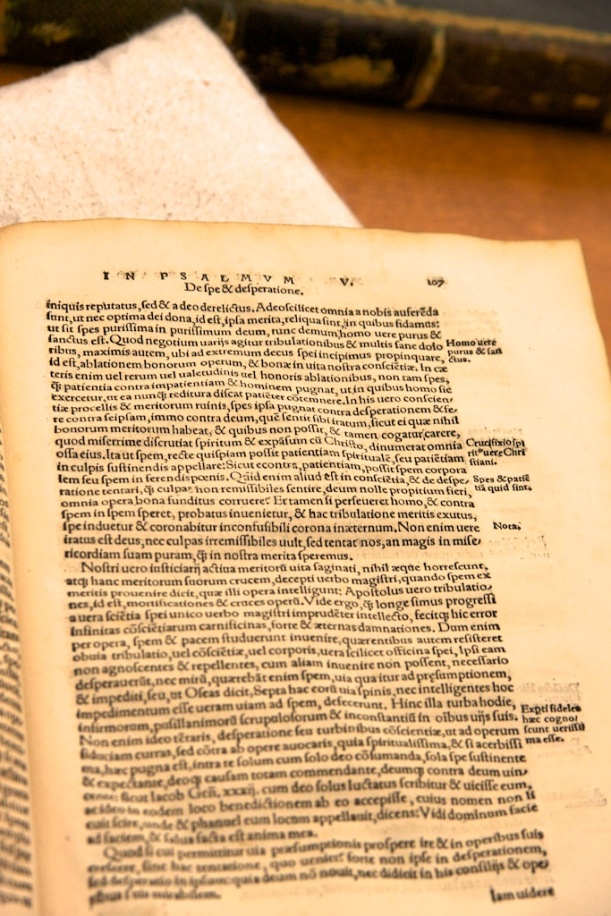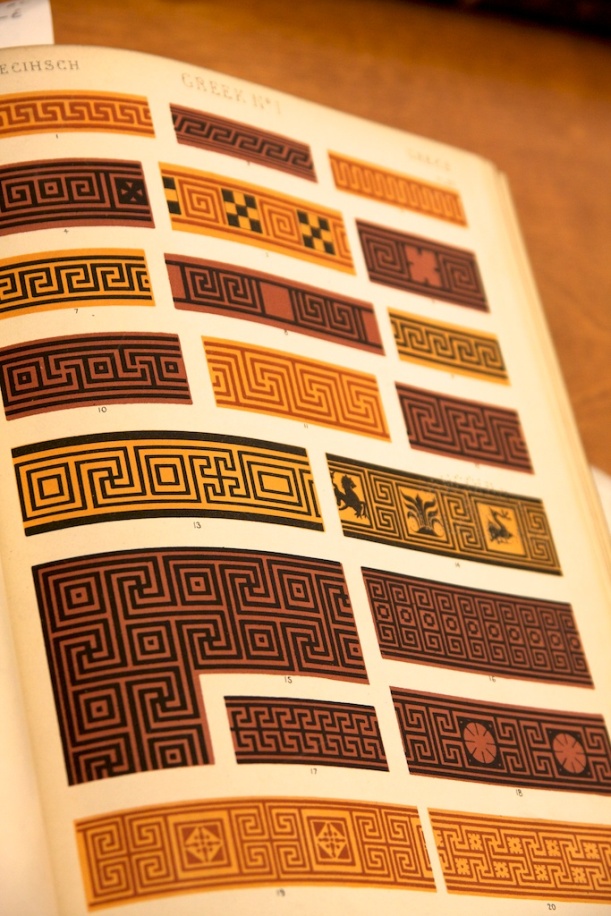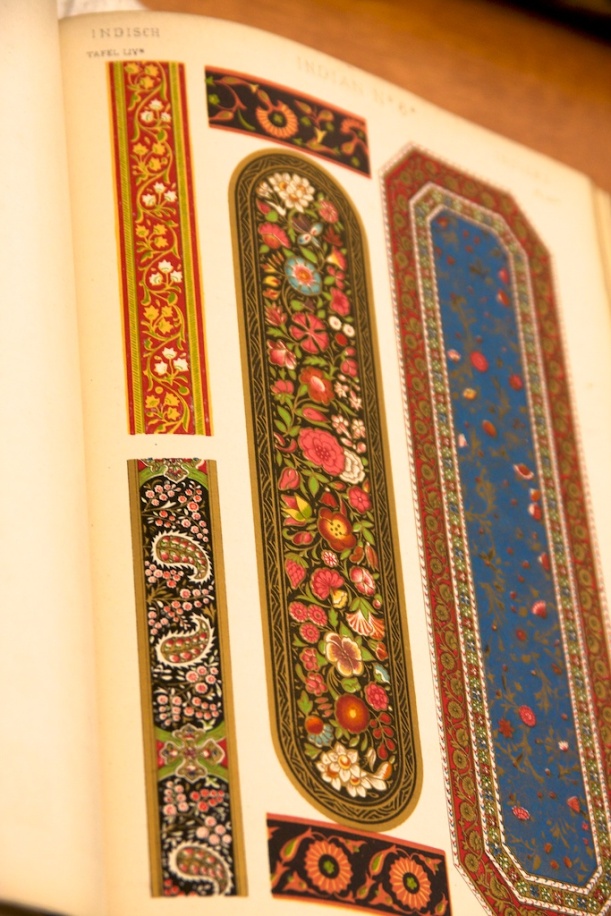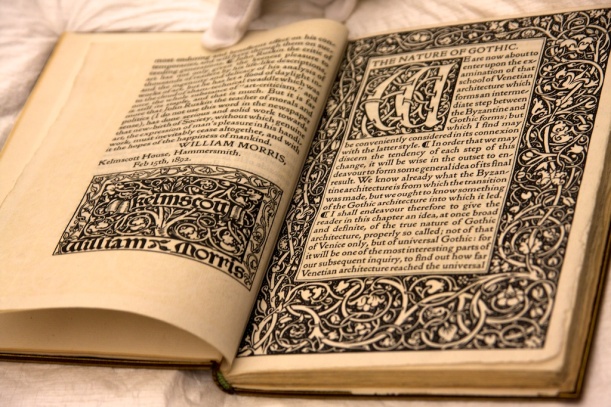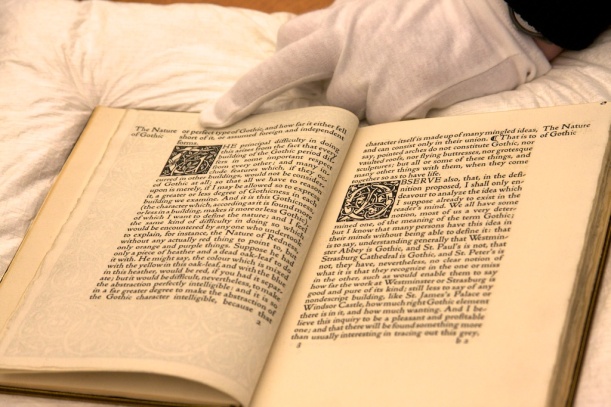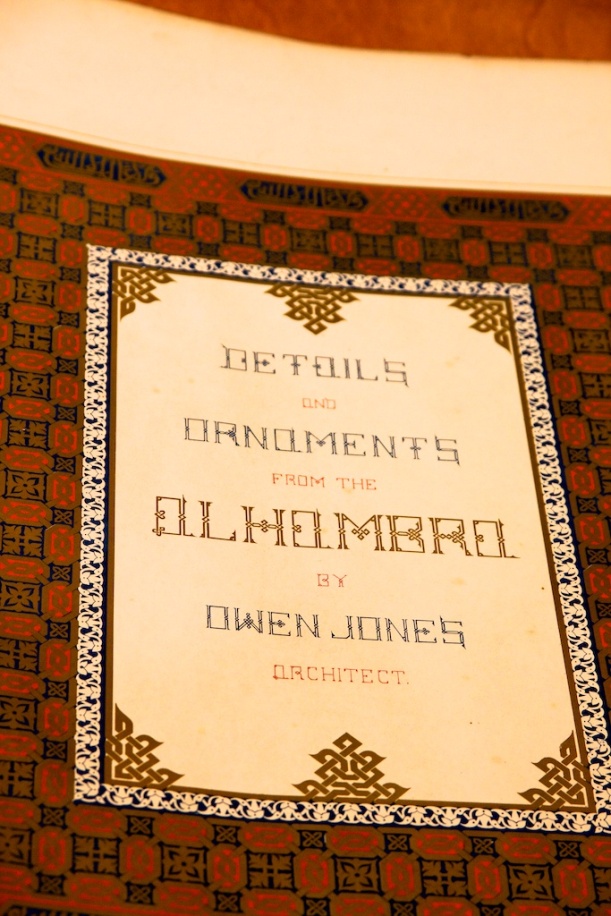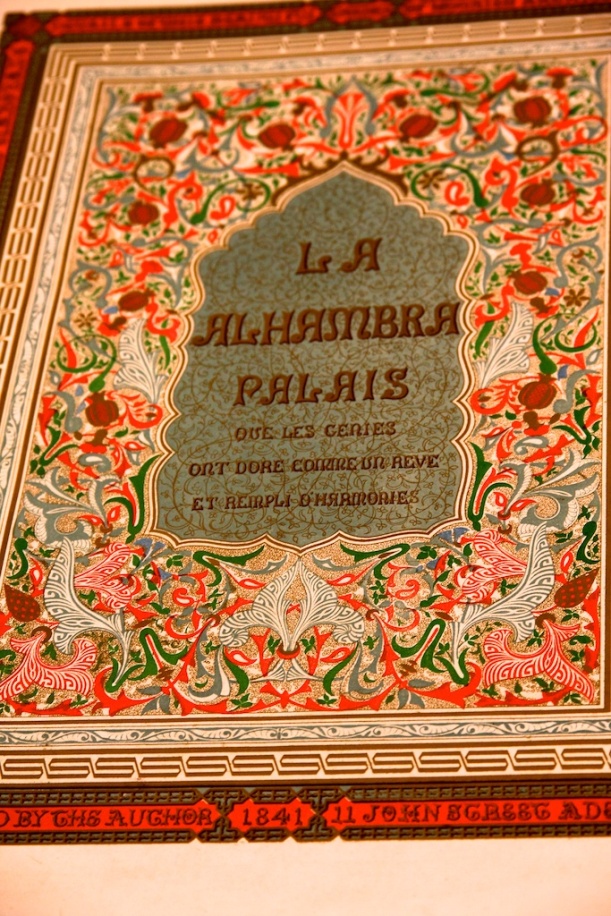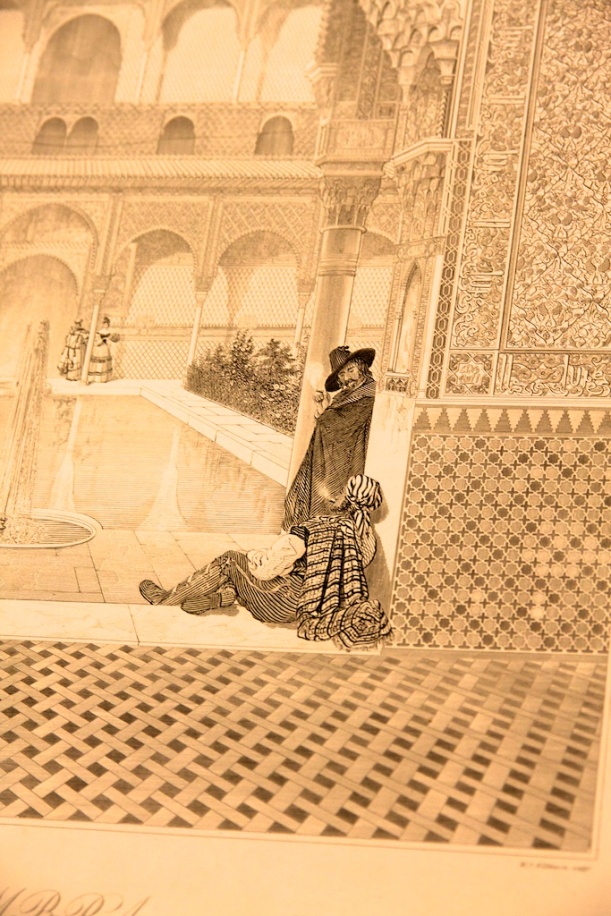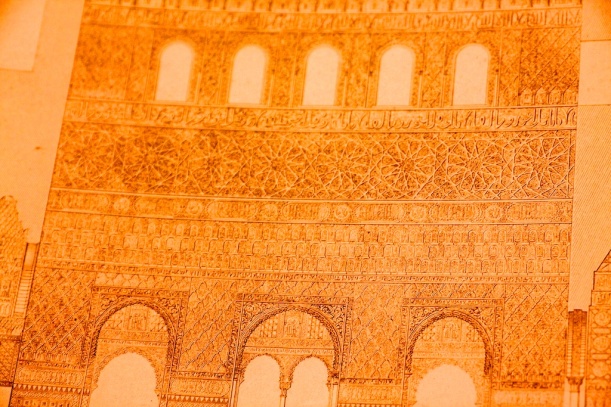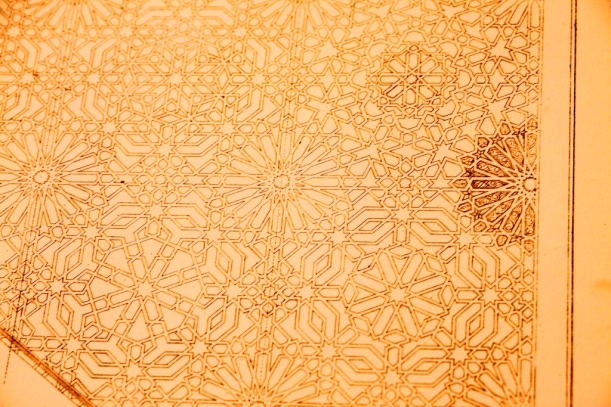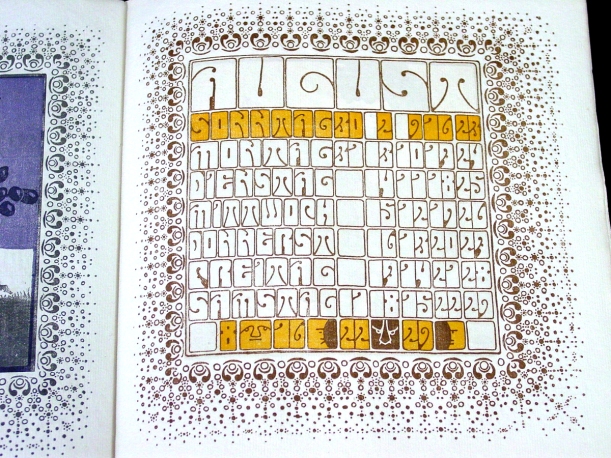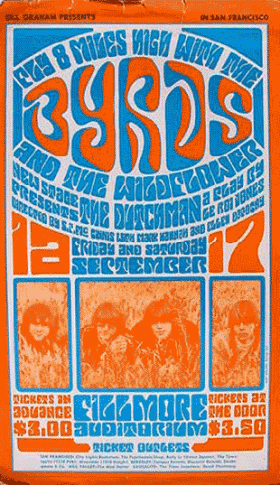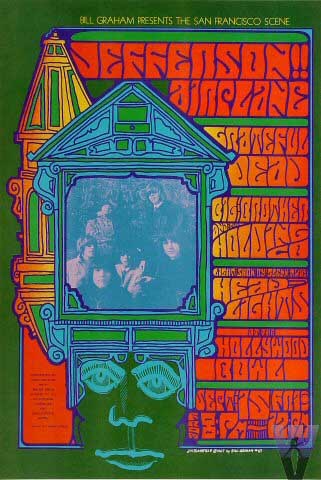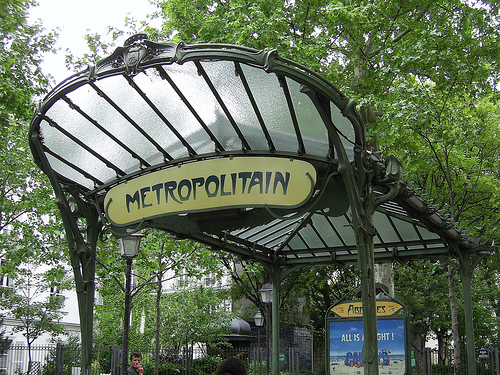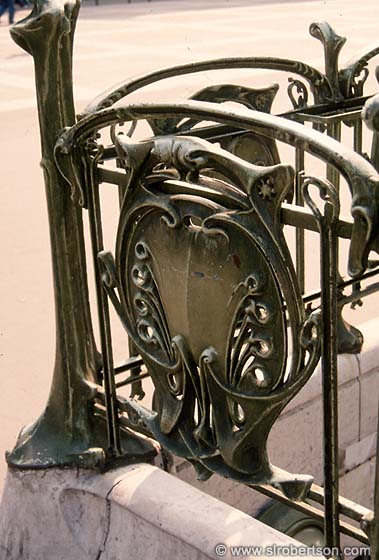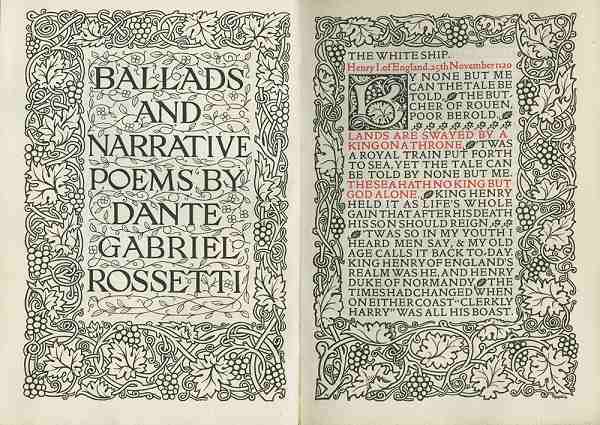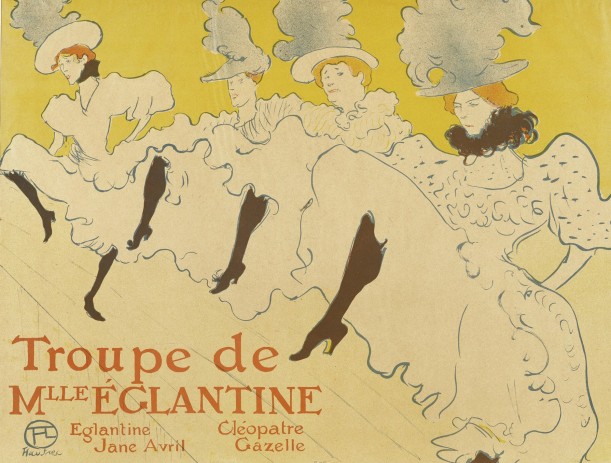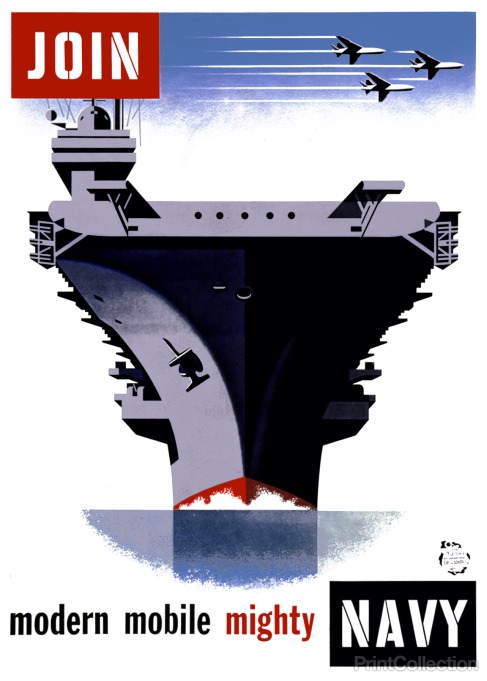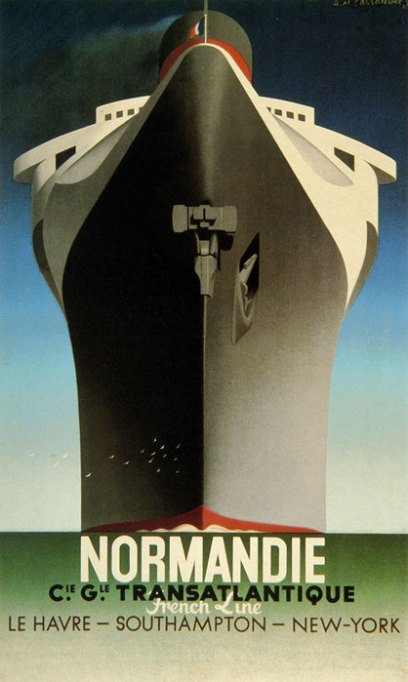For my final posting, I wanted to share the photos I took on our class trip to the Vancouver Public Library’s Special Collections floor. We saw some amazing books.
The first three photos are of an abbess’ Book of Days, an incunabula on vellum.
We then saw a leaf from the Gutenberg bible.
This was followed by an early book, printed in Venice. The page was densely covered in type.
Of particular interest to me was a book fo Martin Luther’s works, in Latin, that had been owned by William Morris. One has to wonder how much influence the typesetting and type design had on Morris himself.
To contrast against Morris, we also looked at Owen Jones’ Grammar of Ornament.
There was a classic example of Morris’ work available as well. True to form, the frontispiece was more elaborate than the inner pages.
Finally, we looked at Owen Jones’ masterpiece, his two volume work on Alhambra. It was exquisite and reminded me of all the work I’d done on Islamic themes.

